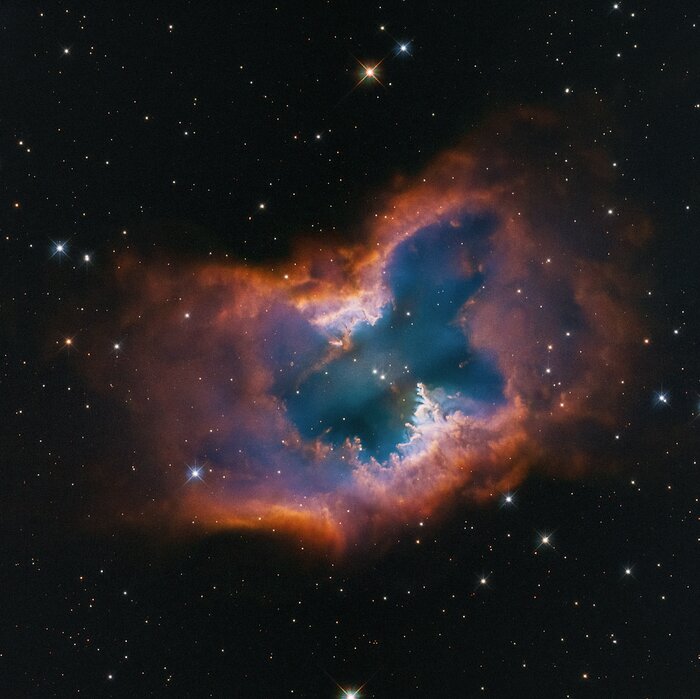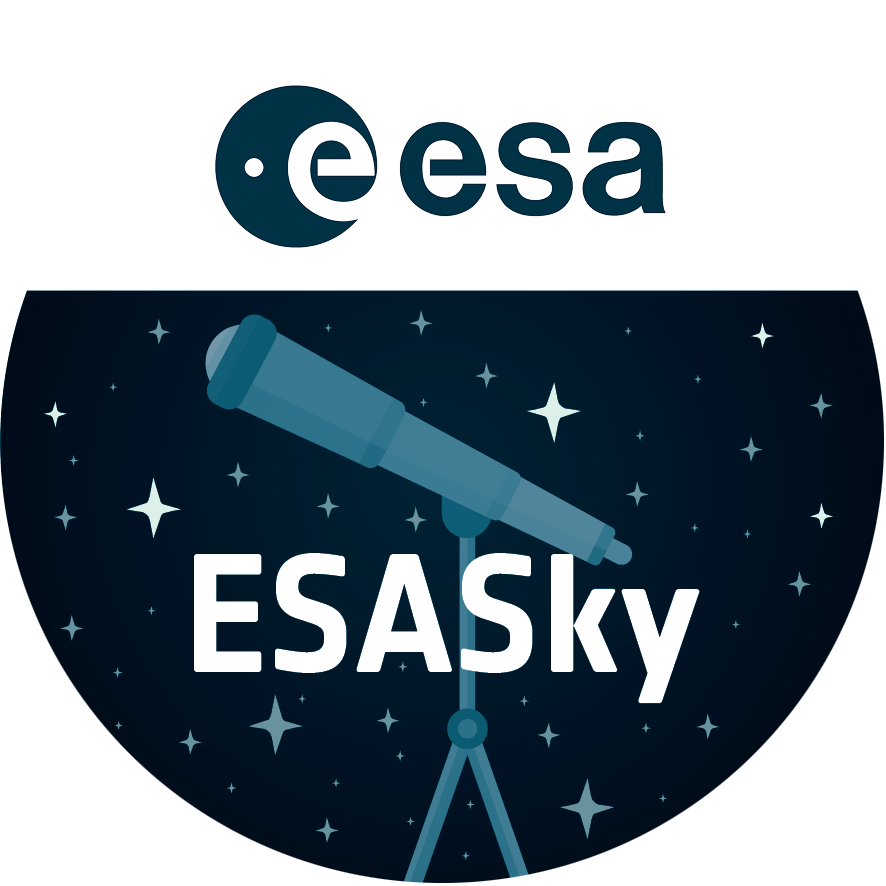Planetary nebula NGC 2899
This Hubble Space Telescope image captures the beauty of the moth-like planetary nebula NGC 2899. This object has a diagonal, bipolar, cylindrical outflow of gas. This is propelled by radiation and stellar winds from a nearly 22 000 degree Celsius white dwarf at the center. In fact, there may be two companion stars that are interacting and sculpting the nebula, which is pinched in the middle by a fragmented ring or torus – looking like a half-eaten donut. It has a forest of gaseous “pillars” that point back to the source of radiation and stellar winds. The colours are from glowing hydrogen and oxygen. The nebula lies approximately 4,500 light-years away in the southern constellation Vela.
[Image description: The planetary nebula NGC 2899 is shaped like a single macaroni noodle, with its edges pointed up, but its edge-on central torus is semi-transparent in the middle. The top and bottom edges are thick and orange. The center is semi-transparent blue and green. The wider central region looks roughly like a moth, also filled with semi-transparent blue and green. There are two pinpoint-like white stars with diffraction spikes toward the center. Immediately below them, slightly toward the right, is a smaller blue orb, a central star. The next layer of gas and dust is whiter, with some thicker pillars that look like they are rising up at bottom center. The colour fades into reds and purples, and then to orange ]
Credit:NASA, ESA, STScI
About the Image
| Id: | heic2505d |
|---|---|
| Type: | Observation |
| Release date: | 23 April 2025, 16:00 |
| Related releases: | heic2505 |
| Size: | 3900 x 3894 px |
About the Object
| Name: | NGC 2899 |
|---|---|
| Distance: | 4500 light years |
| Constellation: | Vela |
| Category: | Anniversary Nebulae |
Classic Wallpapers
Coordinates
| Position (RA): | 9 27 3.86 |
|---|---|
| Position (Dec): | -56° 6' 16.03" |
| Field of view: | 2.58 x 2.57 arcminutes |
| Orientation: | North is 4.0° right of vertical |
Colours & filters
| Band | Wavelength | Telescope |
|---|---|---|
| Optical B | 438 nm |
Hubble Space Telescope
WFC3 |
| Optical O III | 502 nm |
Hubble Space Telescope
WFC3 |
| Optical V | 555 nm |
Hubble Space Telescope
WFC3 |
| Optical H-alpha | 656 nm |
Hubble Space Telescope
WFC3 |
| Optical I | 814 nm |
Hubble Space Telescope
WFC3 |
| Optical N II | 658 nm |
Hubble Space Telescope
WFC3 |


